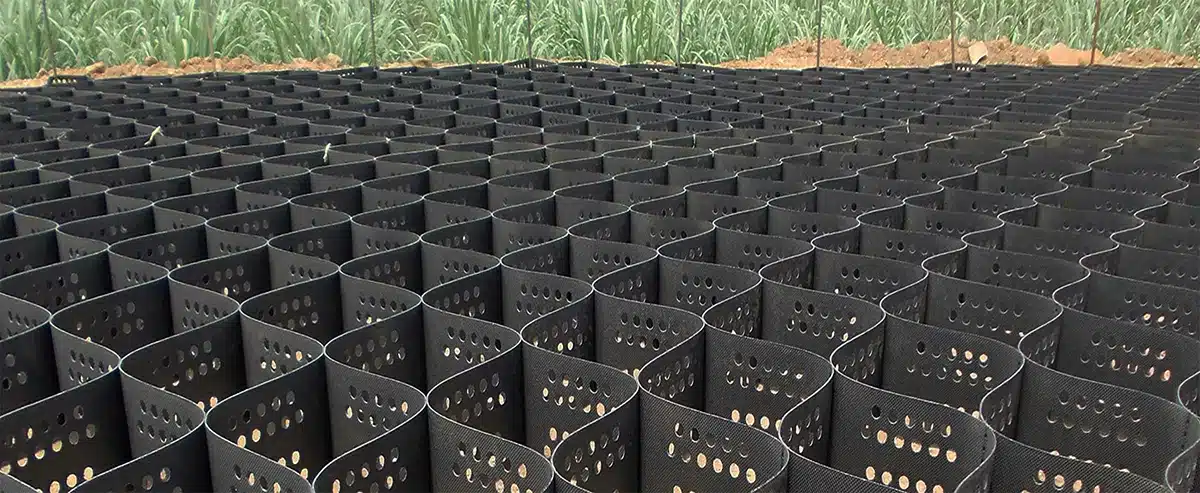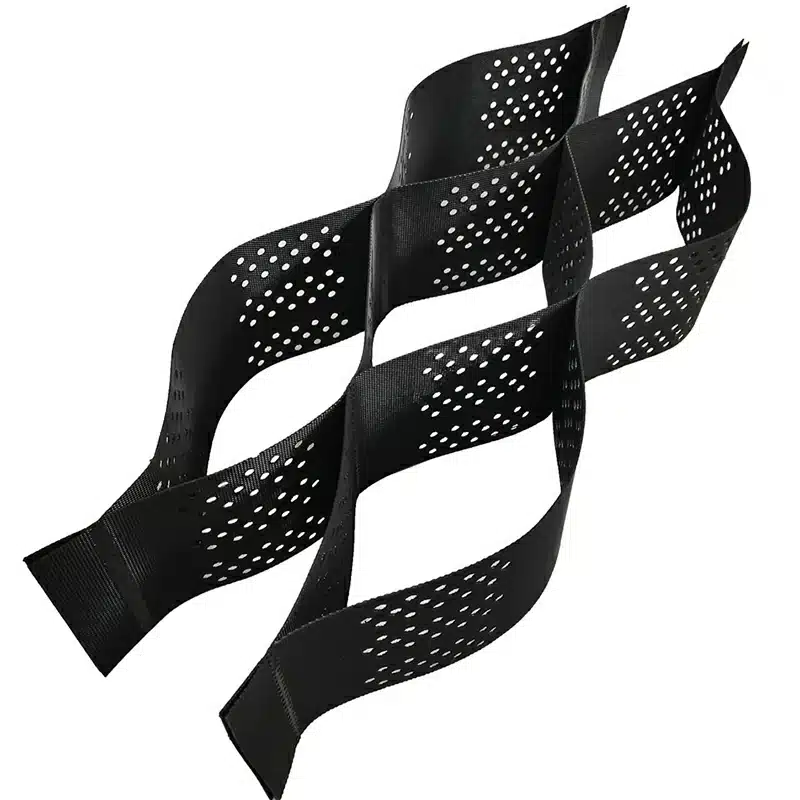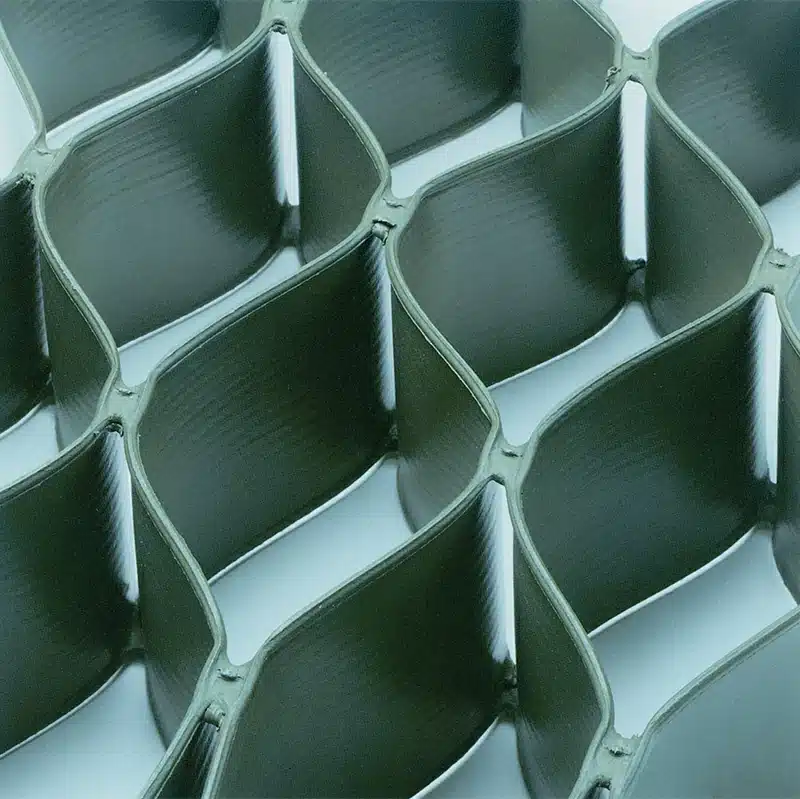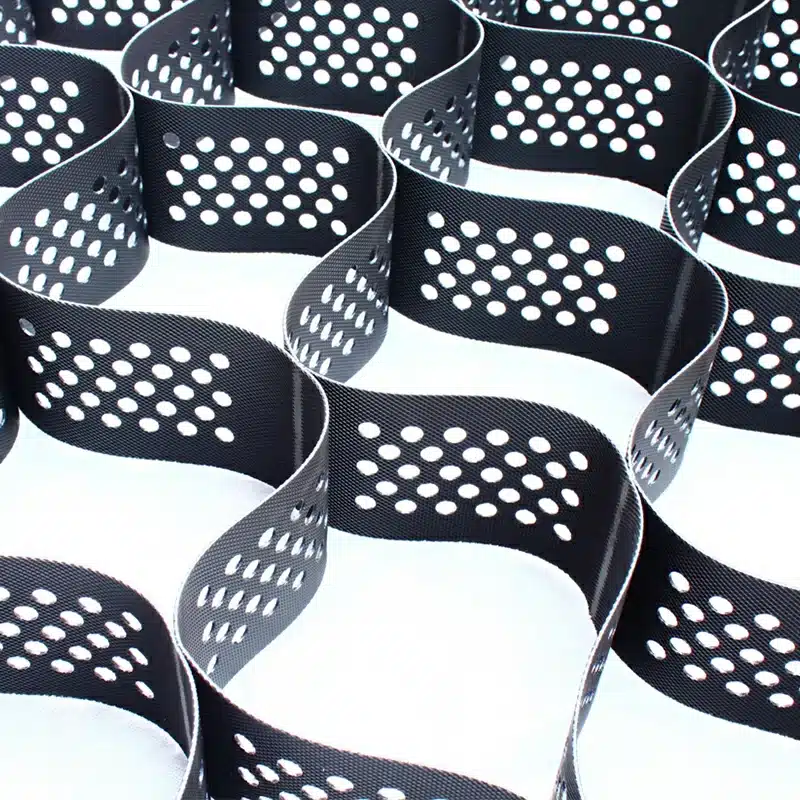+86-159 9860 6917
info@geofantex.com
geofantex@gmail.com
+86-400-8266163-44899
Geocell technology is an innovative geosynthetic solution that enhances soil stability and addresses erosion control issues in a variety of applications. These honeycomb-shaped cells are made from durable materials, providing a cost-effective, environmentally friendly method to improve the strength and longevity of infrastructure. From road construction to slope reinforcement, geocells have become an essential tool in civil engineering projects worldwide. This article explores the basics of geocell technology, its mechanism, its various uses, and how it is applied effectively in construction.
What is Geocell Technology?
Geocell technology refers to a three-dimensional, honeycomb-like structure made from high-density polyethylene (HDPE) or similar materials. These cellular confinement systems, created as an easy and durable material used for stabilizing and protection, form interconnected cells that create a stable layer, enhancing the load-bearing capacity of weak soils. Geocells are used to reinforce the ground, prevent erosion, and distribute loads more efficiently, making them ideal for infrastructure projects like road construction, slope stabilization, and retaining walls.

What is the Mechanism of Geocell?
The mechanism behind geocell technology is based on cellular confinement. When filled with soil, gravel, or other materials, the individual cells prevent lateral movement of the infill, reducing the pressure exerted on the underlying soil. This is further supported by the confinement effect from the geocell walls, flexural capacity, and tension membrane action of the geocell layer, all of which contribute to improved soil shear strength and load distribution. The geocell’s honeycomb structure also enhances the stability of slopes, preventing soil erosion and washouts in high-stress environments.
What are the Uses of Geocell?
Geocells are widely used in several applications, including:
- Road Construction: They reinforce the road base, allowing for the use of weaker soils while improving load-bearing capacity and providing structural reinforcement for load support and earth retention.
- Erosion Control: Geocells protect against soil erosion on slopes, embankments, and riverbanks by holding soil in place, making them ideal for construction for erosion control, soil stabilization on flat ground and steep slopes, and channel protection.
- Retaining Walls: Geocells can be used to build retaining walls by stabilizing the soil behind them, contributing to earth retention and structural stability.
- Slope Reinforcement: They help in slope stabilization by reinforcing the soil, preventing landslides and erosion, while also providing soil stabilization and support on steep slopes.
How to Use Geocell?
To use geocells, follow these basic steps:
- Site Preparation: Clear the surface where the geocell will be installed, removing debris, vegetation, and irregularities.
- Cell Expansion: Expand the geocell structure by pulling it open to cover the area to be reinforced. The geocell grids should be trimmed to fit the area properly and then laid across the excavated base.
- anchoring: Anchor the geocell to the ground using pins or stakes, ensuring it remains securely in place.
- Filling the Cells: Fill the geocells with appropriate infill materials, such as soil, gravel, or sand. Compact the material to provide maximum stabilization and load distribution.
Geocell technology is an innovative and effective method for ground stabilization and erosion control. Its cellular confinement system strengthens weak soils, making it ideal for road construction, slope reinforcement, and retaining walls. By preventing lateral movement and improving load distribution, geocells offer a cost-effective and sustainable solution for civil engineering projects.



Get Free Sample
We’ll respond as soon as possible(within 12 hours)






















